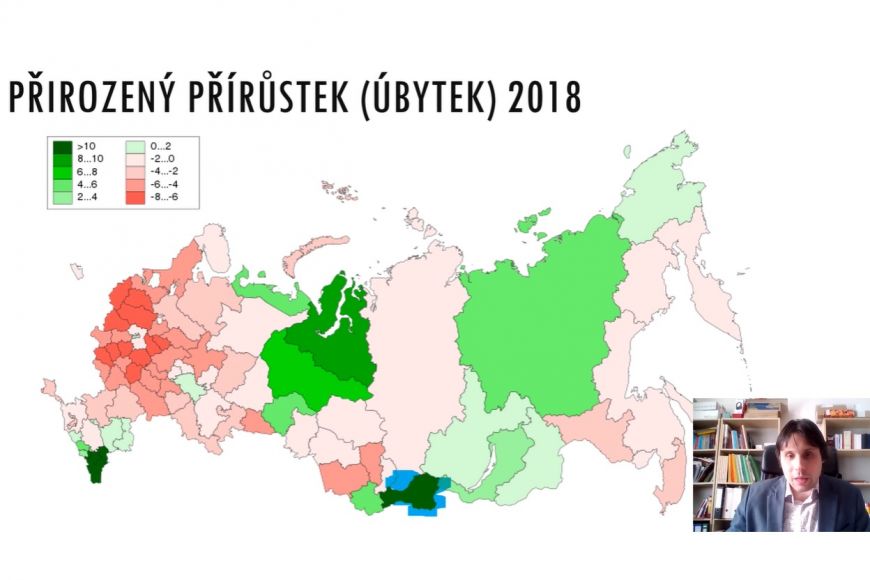Almost overnight, lecturers switched from in-person to online classes and started using smart technologies. “I think that even a direct order would not make us as good at using technologies as does the current situation,” says Šaur, who teaches at the MU Faculty of Arts and whose students can now benefit from his video lectures, which he started recording almost overnight.
“Dear colleagues, welcome to another of our series of lectures,” says Šaur, welcoming students to his class on modern Russia. However, the students are not sitting in a classroom but are watching a video that runs for over an hour and which Šaur had recorded just a few hours before. Most of the screen shows PowerPoint slides and there is a small window where the students see their lecturer speaking as he highlights and clarifies the information in the slides.
“I had been thinking about starting video lectures for a while as it was one of the topics that we talked about a lot on the course I completed with the MU Pedagogical Competence Development Centre (CERPEK). However, you don’t really have time for this in your day-to-day schedule and there is also a psychological barrier – it feels weird to be recording yourself,” admits Šaur. However, the current extraordinary circumstances made him revisit the idea.
“The rector cancelled in-person classes on a Tuesday and I started recording the first video on the Thursday. I would like to take this opportunity to thank our colleagues from the MU Information System and the faculty Centre for Information Technologies. They hit the ground running and the first offers of help and new tools arrived in a very short time,” says Šaur.
His original idea was to make videos that would only show the individual slides of his presentations. However, he felt that something was lacking from the final product and his wife agreed: “We both thought that if I am in the videos as well, it will make them more personal and less distant and this finally helped me overcome my mental barrier. After all, it is just as we agreed with my colleagues from the course – our students are used to our faces and voices, the problem is that now we must get used to them as well.”

Šaur has been making videos for three of the classes that he teaches this semester. In addition, he prepared short tests for the students to check their knowledge and he also uses recordings of a Russian lecturer that are available on YouTube. This means that his students can benefit from two different teaching styles and get an authentic Russian experience.
Šaur describes his efforts as trying to strike the right balance: he does not want to overload his students, who might be struggling with their own family or health issues, but he does not want to make them feel as though their university has abandoned them in this difficult time. “I guess we could just give the students a list of books to read, as they can access library books through e-loans, and then test them at the end. But if we did that, I think we could hardly call ourselves a university anymore. Now is the time to show our students that we are here both with them and for them,” says Šaur decidedly.
He sums up his overall teaching philosophy in these few words, which now clearly shows in his everyday work. He wants to be certain that despite the new form of instruction and the extraordinary circumstances, his students will be as ready for their June exams as ever.
“When it looked like we might only miss two weeks of classes, I thought it probably didn’t make that much difference. However, this is a completely different situation and as teachers, we have to make sure that we help our students develop their knowledge and understanding rather than just making sure they know the facts to pass the test,” says Šaur, explaining that this is why it feels important to be part of the videos. It helps students to see which information is important and understand the context.
Although it is still unclear when in-person classes will be resumed, Šaur is planning to use the “coronavirus videos” again once they do. They can be uploaded online for the students as a basic guide and will allow him to focus more on the details in his lectures.
